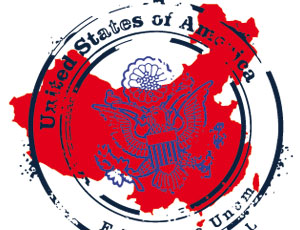Letters from America: Getting Emerging Asia into your U.S. Business Strategy
This is Part I of our ongoing Letters from America to Asia Series, featuring opinions and observations on America’s trade relations with China and emerging Asia from Chris Devonshire-Ellis.
 Oct. 1 – It’s been an interesting couple of weeks as I begin my stint in North America after being based in China for the past 20 years. I’ve been asked if I can adapt to the Western culture after so long away, however at present the only thing I’m likely to miss about China is the mid-Autumn Festival holiday as China celebrates both this and it’s October 1st National Day this week; a time for all China based-folk to have a rest, whereas I now have to go to work all the coming days.
Oct. 1 – It’s been an interesting couple of weeks as I begin my stint in North America after being based in China for the past 20 years. I’ve been asked if I can adapt to the Western culture after so long away, however at present the only thing I’m likely to miss about China is the mid-Autumn Festival holiday as China celebrates both this and it’s October 1st National Day this week; a time for all China based-folk to have a rest, whereas I now have to go to work all the coming days.
Much of my time thus far has been hectic, and spent speaking at events – in the past two weeks I have taken in Montreal, Toronto, Dallas, New York and Columbia, while this coming week I visit Cincinnati, Boston and Providence. But not all those meetings have been about China. Due to our firm’s pan-Asia presence that may not come as a surprise, but what these meetings have brought home is that North American businesses in particular are now changing their concept of how China and Asia fit together, and the opportunities they present.
In fact, I detect a growing change in the manner in which American businesses in particular are now viewing Asia. Just 10 to 15 years ago, effectively the only game in town as concerns American manufacturers was the PRC, and many businesses such as our own have ridden a wave of U.S. outbound investment to China during this period with an almost 100 percent focus purely on this one country. That being said, however, the message I am now starting to pick up is that this dynamic is beginning to change. In Ohio for example, where I recently attended a full day of match-making sessions at the State Export Fair, one gentleman from Dayton was waxing lyrically about his business in Asia, discussing his offices and markets in Vietnam, India, Singapore, Thailand and Indonesia. When pressed about whether he had a presence in China, his reply was “Oops! I forgot about China!” and revealed that he was in fact extant with a sales office in Shanghai. For him, China has become just another Asian play among many. It’s an interesting development, and a change of opportunistic export perception.
That experience, coupled with other meetings I have had, tell me that in the eyes of some U.S. businesses, China is beginning to lose a bit of its luster as the go-to Asian manufacturing destination. A Columbus-based manufacturer of culinary sauces expressly told me he was looking at Vietnam as a market ahead of China, as he felt he could initially learn more from it due to its smaller market. I’m not sure if that was actually a euphemism for perhaps being intimidated by China’s size, but the strategy of getting a hold in a smaller Asian market first does seem to be permeating throughout some American SMEs.
This shift away from 100 percent focus on China appears to be well underway. I attended a reception at the American Ambassador’s residence in Singapore last month, and it was obvious to me that the United States is boosting up its commercial presence in Southeast Asia in particular. The same is true of India, where many newly-posted consular officials (especially those involved in commerce), have been posted to cities such as Delhi, Mumbai and Kolkata after previously holding specific China roles. Interestingly, that re-balancing may also be a feature of the next U.S. government, regardless of who is elected. Both Obama and Romney have pledged to “get tough” on China, and with the bellicose behavior emanating from Beijing recently, coupled with a seemingly traumatic leadership changeover, the focus for the United States in Asia is shifting away from China and more towards Southeast Asia. If China doesn’t seem to be behaving entirely consistently concerning its trade relations with the United States, other Asian countries appear ready and more than willing to step into the breach. I believe that political realization and trend has arrived and will continue.
That’s not to say that China is diminishing, or that is isn’t still a great opportunity for North American businesses. However, the new Chinese leadership will need time to bed down, the Asian regional quarreling such as the Diaoyu Islands spat needs to be pared back, and China’s economy needs time to adjust to its desired status as a consumer market.
The China market entry strategy is changing as well, and American exporters need to start considering the further flung Chinese cities, and not just rely on what are now almost saturated markets in Shanghai, Guangzhou and Beijing. I recently mentioned the new fourth, fifth and sixth-tier cities in China being the places to look at for growth, and these require perhaps a greater sense of adventure, more investment, and a closer look at the supply chain than was previously the case. That is now affecting the type of expatriate employee now desired in China – he or she most certainly requires fluency in Mandarin, a sense of adventure, and an ability to hack it in lesser known cities and not just survive, but bring home orders. That, I suspect, is behind the trend of many China expats currently leaving the country. They do not possess the skill sets the new emerging China requires. Acknowledging so is painful for some. Yet their replacements undoubtedly await, Lonely Planet Guide in hand.
In the meantime, China’s phenomenal growth has spread out as ripples across emerging Asia. As the ASEAN free trade zone starts to kick in from 2015, the U.S. government is now actively pushing American manufacturers to generate future sales abroad, with a loosely suggested 20 percent of total annual sales being recommended by U.S. Export officials: especially for SMEs. Typical smaller, family-run American companies are changing too. While older business owners now in their 50s and 60s were previously able to generate sales exclusively from domestic sources, their sons and daughters are now coming on board and these new American entrepreneurs understand the new dynamic of selling overseas in ways their parents did not.
This means that the focus now is not just on China, but on emerging Asia as the new area to target. After all, competition benefits the consumer, and China is now facing that from markets such as Vietnam, India, Thailand and elsewhere. For the smaller American SME, these markets may also perhaps prove to be an important learning curve when developing an export market in Asia. China, although huge and attractive, is not the only market now on display and in the sights of the American manufacturer. The long-held American belief that choice is good for the consumer is about to hit China (and Asia) in a big way, and it will be driven from the United States.
Chris Devonshire-Ellis is the principal and founding partner of Dezan Shira & Associates, and spent 20 years in China developing the firm. He is now based in North America and regularly travels across the region on road trips meeting with clients and attending events. Upcoming trips in October 2012 include Cincinnati, Boston and Providence. Chris can be contacted for matters concerning American trade, investment, legal establishment, tax and compliance issues into China and Asia via usa@dezshira.com or by visiting www.dezshira.com.
Dezan Shira & Associates assists foreign investors with China market entry, and includes strategic advice, as well as legal establishment, tax and financial planning, and on-going tax, accounting, compliance and business advisory services. The practice has 17 offices across Asia, including 12 in China, and was recently awarded “Innovative Firm of the Year” by the U.S.-based Leading Edge Alliance.
Related Reading
The Complete ‘Letters from America to Asia’ Series
A complete list of past articles from our ongoing ‘Letters from America to Asia Series’ featuring opinions and observations on America’s trade relations with China and emerging Asia.
- Previous Article Dezan Shira & Associates Wins 2012 Innovative Firm of the Year Award
- Next Article Official Data Issued on Profits Realized by Industrial Enterprises



























